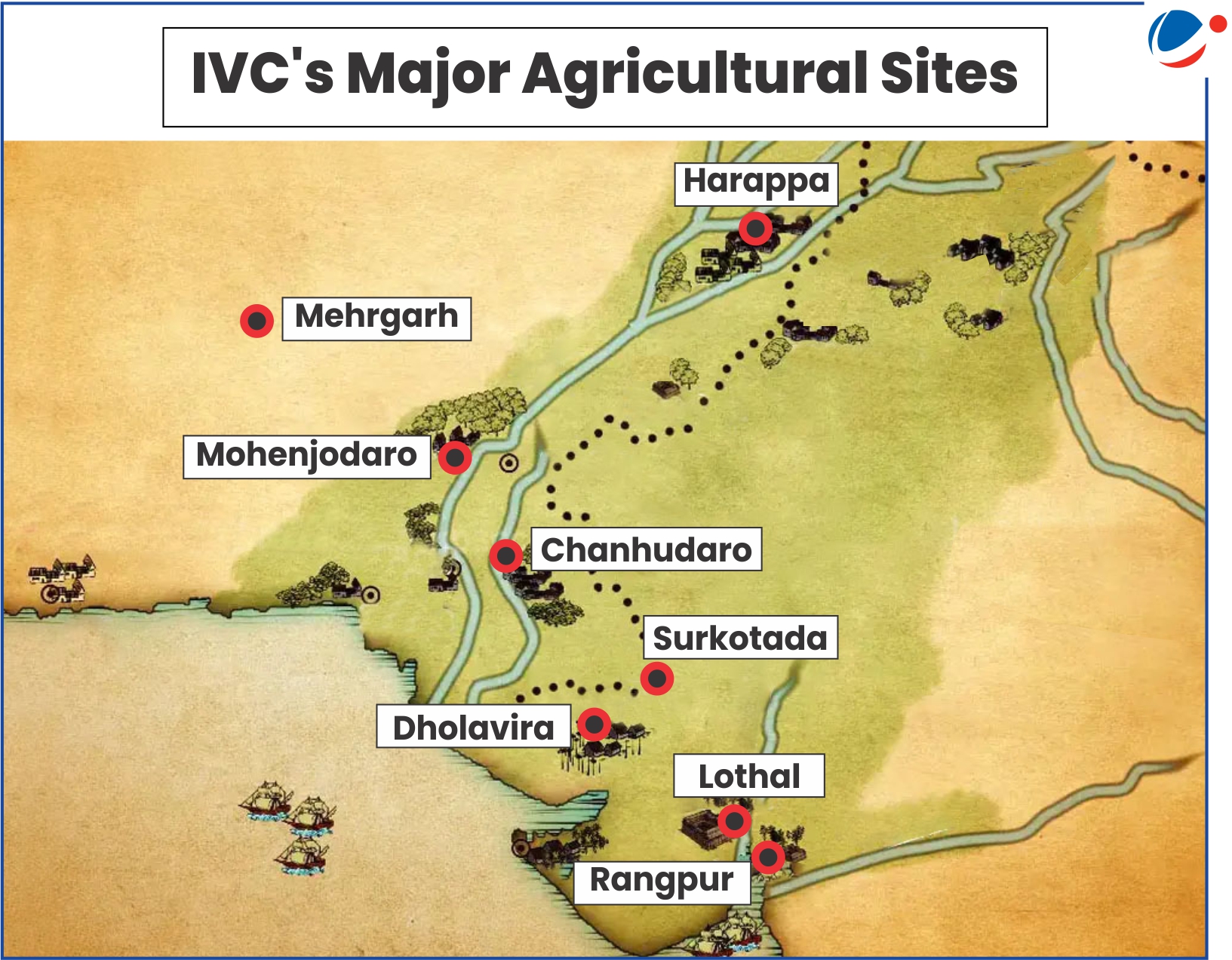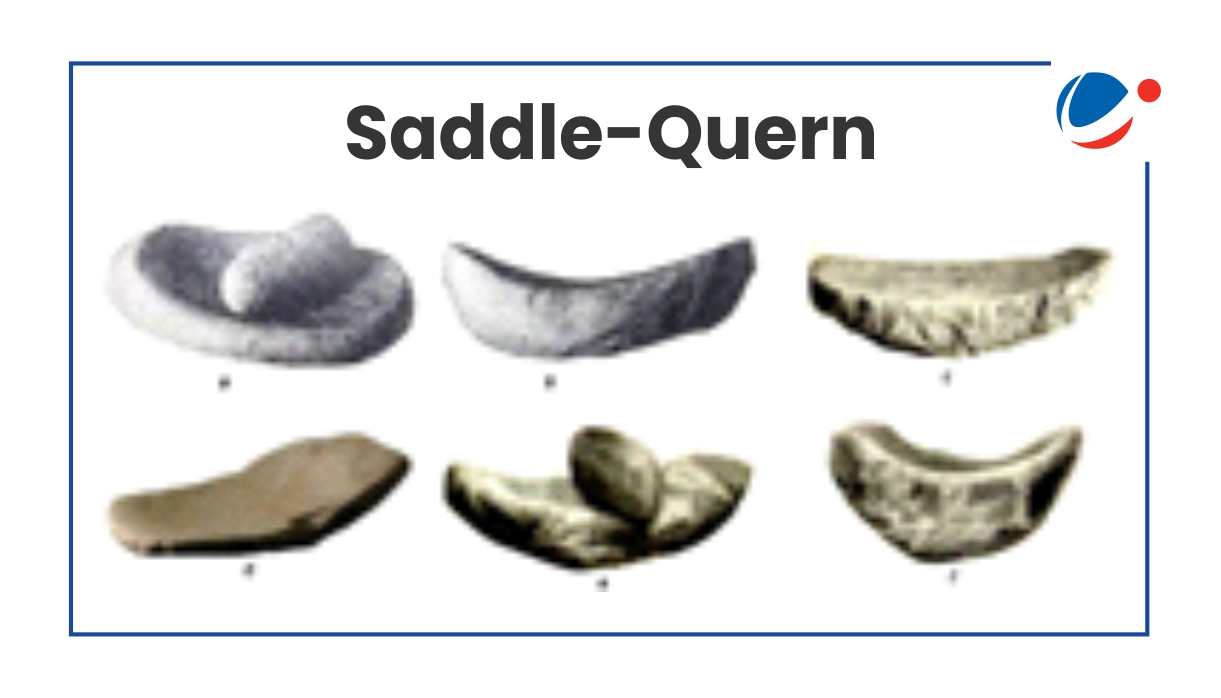
Why in the News?
New radiocarbon dating study has revised the age of Mehrgarh, South Asia's oldest known Neolithic farming settlement in Pakistan, from 8000 BCE to 5200 BCE.
More on the News
- Earlier versions of the farming timeline relied on radiocarbon dates from burnt wood, a material that can be centuries older than the event dated.
- The new team instead dated carbon locked in tooth enamel, which records the actual year a person died and is far less prone to contamination.
- Since the rise of civilization in the Indus Valley is best regarded as the culmination of a long period of Neolithic experimentation and development, this study also pushes forward the timeline for the start of agriculture in the Indus Valley Civilization (IVC).
Agriculture in IVC
The seasonal mobility of early hunter-gatherer communities—who relied on wild plants and animals for sustenance—gradually gave way to a more settled agrarian lifestyle. These communities began cultivating crops and domesticating animals, marking a significant shift in human civilisation.
Archaeological excavations in the Indus Valley and surrounding regions provide concrete evidence of early agricultural practices, as seen in the discovery of granaries, pottery, terracotta figurines, and ornamental artifacts.
Crops Cultivated:
- Wheat and barley were the primary rabi crops, whereas mustard, sesamum, cotton, dates, and leguminous plants were sown as kharif crops.
- Evidence of wheat was found at Harappa and Mohenjo-Daro whereas evidence of barley was found at Shortugai.
- Evidence of rice cultivation is limited to Lothal and Rangpur in Gujarat, with rice husk found at Rangpur.

- Pulses: Green gram, black gram, and horse gram grown at various sites and Balathal, whereas evidence of peas found at Harappa.
- Brassicas: Brassica campestris (brown sarson, yellow sarson, toria) and Brassica juncea (mustard) found at Chanhu-daro and Surkotada, were supposedly used for oil, medicine, or bird feed.
- Cotton: IVC was the world's first cotton producer. The Babylonian and Greek names for cotton, Sindhu and Sindon, respectively, point to the Indus Valley as the home of cotton.
- Cloth fragment and 24-fold yarn is found at Mohenjo-Daro.
- Fruits: Jujube (Ber) found at Mehrgarh, Date Palms: date stones recovered at Nausharo and Mohenjo-Daro, Grapes: grape pips found at Mehrgarh, Nausharo, and Shortugai, Walnuts and Peepal Fruit: Recovered at Hulas.
Agricultural Techniques and Tools:

- Plough: The Harappans probably learned plough technology from the Sumerians. They used wooden ploughs, which did not survive over time as wood decays.
- A terracotta plough model from Mohenjo-Daro indicates their design, though it lacks a handle.
- Wheeled Carts: Bullock carts with solid wheels were used to transport goods like farmyard manure. It highlights animal power and wheel technology.
- Several bronze models of bullock carts are found at Harappa and Chanhu-daro as well as Cart-ruts have been found at Harappa.
- Cropping Patterns: Excavations at Kalibangan revealed a furrowed field with a grid pattern, suggesting mixed cropping (e.g., mustard and grams), possibly the earliest evidence of a ploughed field globally.
- Saddle-Quern: Which is considered as modern equivalents sil and vatta was used for grinding grains like roasted barley, as depicted in a Mohenjo-Daro terracotta of a woman kneading flour persist in Indian homes.

- Crop Protection: Wild animals like deer, wild boars, parakeets threatened the crops.
- Terracotta sling balls found at Harappan sites indicate farmers used slings to scare pests, a practice still seen in northern India.
Land and Irrigation Practices:
- Fields were primarily located along river banks, leveraging seasonal inundation for irrigation.
- Rabi crops were sown post-inundation, while kharif crops were sown at the start of inundation and harvested at its end.
- Advanced irrigation (gabarbands, canals, wells) supported year-round cultivation, especially during dry seasons.
Conclusion
The Indus Valley Civilization thrived for centuries because of its strong agricultural foundation. Their farming skills supported advanced cities, beautiful art, and wide-reaching trade networks. This agricultural success was key to their lasting impact on human history.



